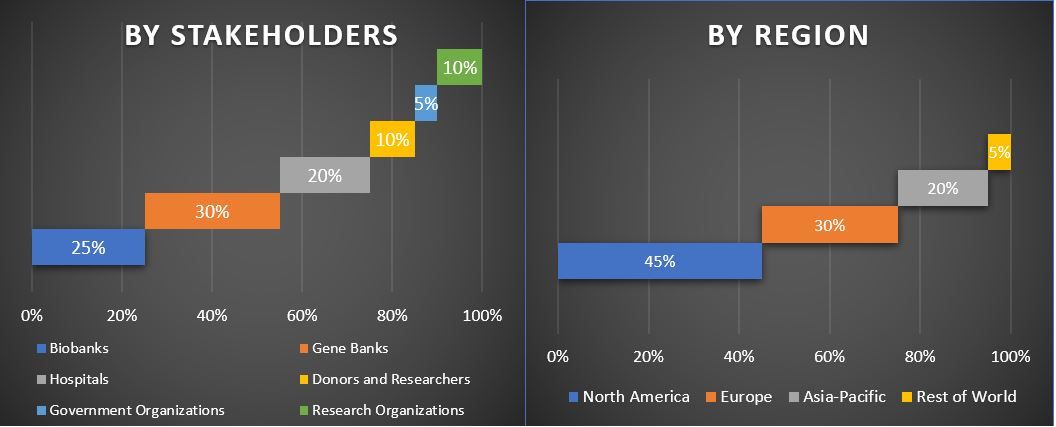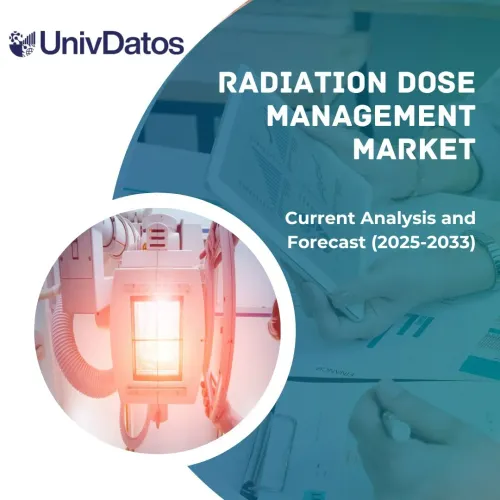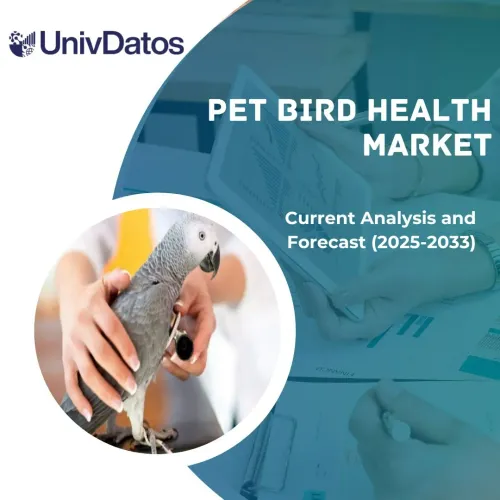- Trang chủ
- Về chúng tôi
- Ngành
- Dịch vụ
- Đọc
- Liên hệ với chúng tôi
Thị trường bảo quản sinh học: Phân tích hiện tại và Dự báo (2021-2027)
Nhấn mạnh vào Loại (Môi trường bảo quản sinh học, Thiết bị mẫu sinh học, Tủ đông, Hệ thống lưu trữ lạnh, Thiết bị rã đông, Tủ lạnh); Mẫu sinh học (Mẫu mô người, Cơ quan, Tế bào gốc, Khác); Ứng dụng (Ứng dụng trị liệu, Ứng dụng nghiên cứu, Thử nghiệm lâm sàng, Khác); Người dùng cuối (Ngân hàng sinh học, Ngân hàng gen, Bệnh viện, Khác); Khu vực và Quốc gia
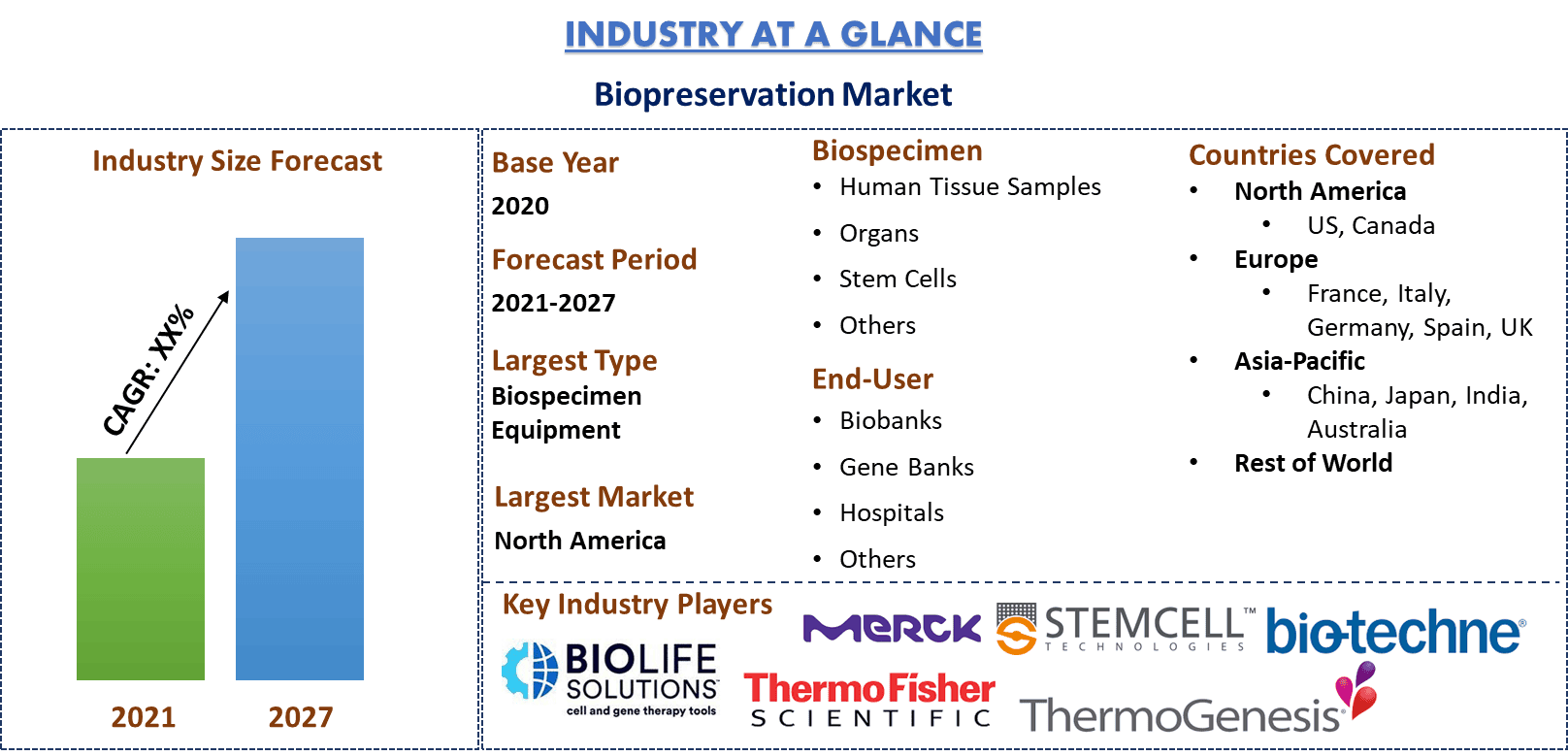
Thị trường bảo quản sinh học có giá trị 5 tỷ đô la Mỹ vào năm 2020 và dự kiến sẽ tăng trưởng với tốc độ CAGR là 14% trong giai đoạn dự báo (2021-2027).Bảo quản sinh học cung cấp một loạt các ứng dụng trị liệu và công nghiệp để phát triển các công nghệ dựa trên tế bào. Nó được sử dụng trong nhiều cơ sở chăm sóc sức khỏe để bảo tồn chức năng và tính toàn vẹn của các vật liệu thử nghiệm lâm sàng như trứng, tinh trùng, phôi và các vật liệu sinh học khác. Bảo quản sinh học bảo tồn độ tinh khiết và tính bền vững của các mẫu sinh học đồng thời kéo dài thời hạn sử dụng của chúng. Lưu trữ sinh học, một hình thức bảo quản sinh học, thường được sử dụng trong nghiên cứu y học liên quan đến y học chính xác và nghiên cứu bộ gen. Vai trò cơ bản của các ngân hàng sinh học là thu thập, xử lý và lưu trữ các mẫu và hồ sơ liên quan. Ví dụ, vào tháng 6 năm 2021, Biodesix Inc. một công ty chẩn đoán ung thư phổi, đã thông báo hợp tác chiến lược với Datavant để giúp bảo vệ, kết hợp và chia sẻ dữ liệu sức khỏe. Thông qua quan hệ đối tác này, Biodesix ẩn danh phần ung thư phổi trong ngân hàng sinh học mẫu và dữ liệu mở rộng của mình bằng quy trình mã hóa độc quyền của Datavant và kết nối nó với nhiều bộ dữ liệu thực tế trong khi bảo vệ quyền riêng tư của bệnh nhân một cách an toàn và tuân thủ.
Hơn nữa, sự tiến triển của y học tái tạo để điều trị và kiểm soát các bệnh mãn tính khác nhau như ung thư, suy tim, tiểu đường, bao gồm Covid-19 đang thúc đẩy sự tăng trưởng của thị trường bảo quản sinh học. Theo Hiệp hội Ung thư Hoa Kỳ, vào năm 2020, có khoảng 89.500 trường hợp ung thư được chẩn đoán và khoảng 9.270 ca tử vong do ung thư ở thanh thiếu niên và người lớn trẻ tuổi từ 15 đến 39 tuổi tại Hoa Kỳ đã được ghi nhận. Do đó, y học tái tạo và y học cá nhân hóa dự kiến sẽ chứng kiến sự tăng trưởng mạnh mẽ trong tương lai, đóng góp vào sự tăng trưởng chung của thị trường bảo quản sinh học. Do các lệnh phong tỏa do chính phủ áp đặt để ngăn chặn sự lây lan của Covid-19, thị trường bảo quản sinh học toàn cầu đã chứng kiến sự sụt giảm nhỏ trong ngắn hạn. Do đại dịch, chuỗi cung ứng toàn cầu đã ngừng hoạt động, điều này đã tác động đến thị trường. Tuy nhiên, vào giữa đại dịch, đã có nhu cầu ngày càng tăng về việc bảo quản huyết tương, dịch cơ thể, mô và cơ quan. Do đó, đã dẫn đến sự tăng trưởng tích cực đối với các dịch vụ bảo quản sinh học. Thị trường sẽ vẫn tăng giá trong năm tới. Ví dụ, vào tháng 3 năm 2020, Đại học Columbia Vagelos College of Physicians and Surgeons, Hoa Kỳ, hợp tác với Bệnh viện New York-Presbyterian, đã thành lập Ngân hàng sinh học COVID-19 như một nguồn tài nguyên tập trung để thu thập, lưu trữ và phổ biến các mẫu sinh học và dữ liệu lâm sàng cho các nhà nghiên cứu tại Đại học Columbia và những nơi khác.
Phân tích chuỗi giá trị của Thị trường bảo quản sinh học
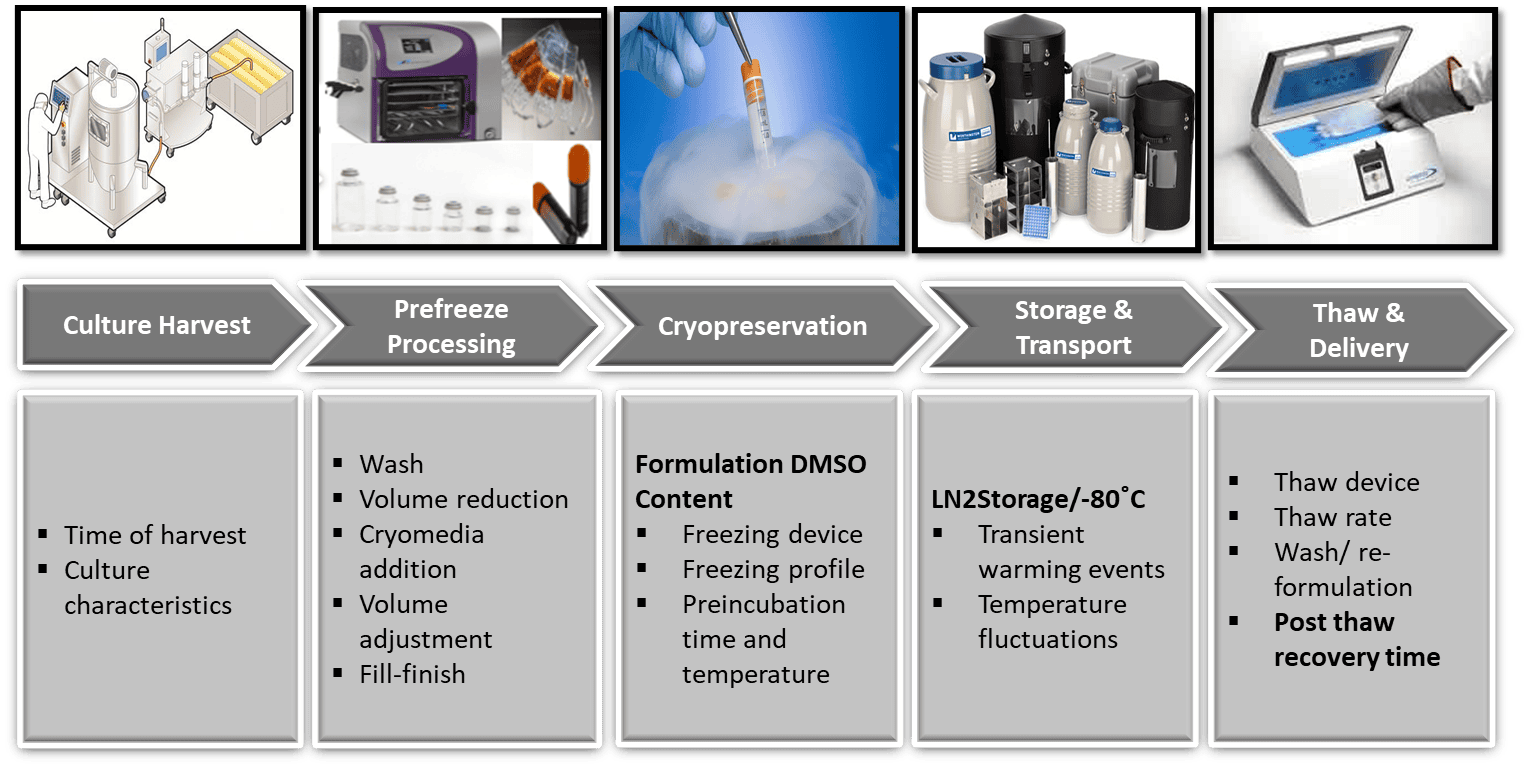
Thermo Fisher Scientific Inc., Merck KGaA, ThermoGenesis Holdings, Inc., Bio-Techne Corporation, BioLife Solutions, Inc., Exact Sciences Corporation, Princeton CryoTech, Inc., Stemcell Technologies, Inc., OPS Diagnostics, AMS Biotechnology là một số nhà sản xuất nổi bật đang hoạt động trên thị trường bảo quản sinh học. Một số thương vụ M&A cùng với quan hệ đối tác đã được các nhà sản xuất này thực hiện để tạo điều kiện cho khách hàng với các sản phẩm công nghệ cao và sáng tạo.
Thông tin chi tiết được trình bày trong Báo cáo
“Trong số Loại,Thiết bị mẫu sinh họcphân khúc nắm giữ phần lớn thị phần”
Dựa trên các loại, thị trường được phân chia thành môi trường bảo quản sinh học, thiết bị mẫu sinh học, tủ đông, hệ thống lưu trữ lạnh, thiết bị rã đông và tủ lạnh. Phân khúc thiết bị mẫu sinh học đã chiếm lĩnh thị trường lớn vào năm 2020, do tăng cường đầu tư từ các tổ chức tư nhân và công cộng cho nghiên cứu và phát triển các liệu pháp tế bào và gen và ngày càng chấp nhận tủ lạnh và tủ đông sinh học để bảo quản các mẫu sinh học.
“Trong số Mẫu sinh học, phân khúc Tế bào gốc dự kiến sẽ tăng trưởng với tốc độ CAGR cao nhất trong giai đoạn phân tích”
Dựa trên mẫu sinh học, thị trường được phân chia thành mẫu mô người, cơ quan, tế bào gốc và các loại khác. Phân khúc tế bào gốc chiếm ưu thế trên thị trường vào năm 2020 do nhận thức ngày càng tăng của mọi người về việc bảo tồn tế bào gốc máu cuống rốn của trẻ sơ sinh để điều trị các bệnh mãn tính như ung thư và các bệnh khác.
“Trong số Ứng dụng, Ứng dụng trị liệuphân khúc nắm giữ phần lớn thị phần”
Dựa trên ứng dụng, thị trường được phân chia thành các ứng dụng trị liệu, ứng dụng nghiên cứu, thử nghiệm lâm sàng và các loại khác. Phân khúc ứng dụng trị liệu chiếm ưu thế trên thị trường vào năm 2020. Sự tăng trưởng cao nhất của phân khúc có thể được ghi nhận cho những tiến bộ trong lĩnh vực y học tái tạo, y học cá nhân hóa và lưu trữ sinh học.
“Trong số Người dùng cuối,Ngân hàng sinh họcphân khúc dự kiến sẽ tăng trưởng với tốc độ CAGR cao nhất trong giai đoạn phân tích”
Dựa trên người dùng cuối, thị trường được phân chia thành các ngân hàng sinh học, ngân hàng gen, bệnh viện và các loại khác. Phân khúc ngân hàng sinh học chiếm phần doanh thu lớn vào năm 2020, do nhu cầu ngày càng tăng về bảo tồn mẫu sinh học, mô, cơ quan và tế bào gốc cho các mục đích nghiên cứu khác nhau.
“Bắc Mỹ biểu thị một trong những thị trường lớn nhất của thị trường bảo quản sinh học”
Để hiểu rõ hơn về động lực thị trường của thị trường bảo quản sinh học, một phân tích chi tiết đã được thực hiện cho các khu vực khác nhau trên toàn cầu bao gồm Bắc Mỹ (Hoa Kỳ, Canada và phần còn lại của Bắc Mỹ), Châu Âu (Đức, Pháp, Ý, Tây Ban Nha, Vương quốc Anh và phần còn lại của Châu Âu), Châu Á - Thái Bình Dương (Trung Quốc, Nhật Bản, Ấn Độ, Úc và phần còn lại của APAC), Phần còn lại của Thế giới. Bắc Mỹ tạo thành một thị trường lớn cho Bảo quản sinh học và tạo ra doanh thu tối đa vào năm 2020 do nguồn tài trợ của chính phủ cao, chi tiêu chăm sóc sức khỏe cá nhân mạnh mẽ, các chương trình nâng cao nhận thức đã được phát triển, sự chấp nhận nhanh chóng các kỹ thuật phân tích mới và sự hiện diện của các chuyên gia và bác sĩ có trình độ.
Lý do để mua báo cáo này:
- Nghiên cứu bao gồm phân tích quy mô thị trường và dự báo được xác nhận bởi các chuyên gia trong ngành chủ chốt được xác thực
- Báo cáo trình bày một bản xem xét nhanh về hiệu suất tổng thể của ngành trong nháy mắt
- Báo cáo bao gồm phân tích chuyên sâu về các đối tác trong ngành nổi bật, tập trung chủ yếu vào các báo cáo tài chính kinh doanh chính, danh mục sản phẩm, chiến lược mở rộng và các sự kiện gần đây
- Phân tích chi tiết về các động lực, hạn chế, xu hướng chính và cơ hội hiện có trong ngành
- Nghiên cứu bao gồm toàn diện thị trường trên các phân khúc khác nhau
- Phân tích cấp khu vực chuyên sâu của ngành
Tùy chọn tùy chỉnh:
Thị trường bảo quản sinh học có thể được tùy chỉnh hơn nữa theo yêu cầu hoặc bất kỳ phân khúc thị trường nào khác. Bên cạnh đó, UMI hiểu rằng bạn có thể có nhu cầu kinh doanh riêng, do đó, vui lòng kết nối với chúng tôi để có được một báo cáo hoàn toàn phù hợp với yêu cầu của bạn.
Mục lục
Phân tích thị trường lịch sử, ước tính thị trường hiện tại và dự báo thị trường trong tương lai của Thị trường bảo quản sinh học toàn cầu là ba bước chính được thực hiện để tạo và phân tích việc áp dụng bảo quản sinh học trong các phân khúc khác nhau trên các khu vực chính trên toàn cầu. Nghiên cứu thứ cấp toàn diện đã được tiến hành để thu thập số liệu thị trường lịch sử và ước tính quy mô thị trường hiện tại. Thứ hai, để xác thực những hiểu biết sâu sắc này, nhiều kết quả và giả định đã được xem xét. Hơn nữa, các cuộc phỏng vấn chính toàn diện cũng đã được thực hiện với các chuyên gia trong ngành trên toàn bộ chuỗi giá trị của lĩnh vực bảo quản sinh học. Sau khi giả định và xác thực số liệu thị trường thông qua các cuộc phỏng vấn chính, chúng tôi đã sử dụng cách tiếp cận từ dưới lên để dự báo quy mô thị trường hoàn chỉnh. Sau đó, các phương pháp phân tích và tam giác hóa dữ liệu đã được áp dụng để ước tính và phân tích quy mô thị trường của các phân khúc và phân khúc phụ mà ngành liên quan đến. Phương pháp chi tiết được giải thích dưới đây:
Phân tích quy mô thị trường lịch sử
Bước 1: Nghiên cứu chuyên sâu về các nguồn thứ cấp:
Nghiên cứu thứ cấp chi tiết đã được tiến hành để có được quy mô thị trường lịch sử của thị trường bảo quản sinh học thông qua các nguồn nội bộ của công ty nhưbáo cáo thường niên & báo cáo tài chính, bản trình bày hiệu suất, thông cáo báo chí, v.v.,và các nguồn bên ngoài bao gồmtạp chí, tin tức & bài báo, ấn phẩm của chính phủ, ấn phẩm của đối thủ cạnh tranh, báo cáo ngành, cơ sở dữ liệu của bên thứ ba và các ấn phẩm đáng tin cậy khác.
Bước 2: Phân khúc thị trường:
Sau khi có được quy mô thị trường lịch sử của thị trường bảo quản sinh học, chúng tôi đã tiến hành phân tích thứ cấp chi tiết để thu thập thông tin chi tiết về thị trường lịch sử và chia sẻ cho các phân khúc khác nhau cho các khu vực chính. Các phân khúc chính bao gồm trong báo cáo là loại, mẫu sinh học, ứng dụng và người dùng cuối. Phân tích cấp quốc gia hơn nữa đã được tiến hành để đánh giá việc áp dụng tổng thể thị trường bảo quản sinh học ở mọi khu vực.
Bước 3: Phân tích yếu tố:
Sau khi có được quy mô thị trường lịch sử của các phân khúc và phân khúc phụ khác nhau, chúng tôi đã tiến hành mộtphân tích yếu tốchi tiết để ước tính quy mô thị trường hiện tại của bảo quản sinh học. Hơn nữa, chúng tôi đã tiến hành phân tích yếu tố bằng cách sử dụng các biến phụ thuộc và độc lập như những tiến bộ ngày càng tăng trong việc lưu trữ sinh học và nhu cầu ngày càng tăng về bảo tồn tế bào gốc máu cuống rốn của trẻ sơ sinh trên toàn thế giới sẽ thúc đẩy nhu cầu bảo quản sinh học. Một phân tích kỹ lưỡng đã được tiến hành cho các tình huống cung và cầu, xem xét các quan hệ đối tác hàng đầu, sáp nhập và mua lại, mở rộng kinh doanh và ra mắt sản phẩm trong ngành Bảo quản sinh học trên toàn cầu.
Ước tính & Dự báo Quy mô Thị trường Hiện tại
Đo lường Thị trường Hiện tại:Dựa trên những hiểu biết sâu sắc có thể hành động từ 3 bước trên, chúng tôi đã đi đến quy mô thị trường hiện tại, những người chơi chủ chốt trên thị trường bảo quản sinh học và thị phần của các phân khúc. Tất cả các phân chia tỷ lệ phần trăm và phân tích thị trường cần thiết đều được xác định bằng cách sử dụng phương pháp thứ cấp nêu trên và đã được xác minh thông qua các cuộc phỏng vấn chính.
Ước tính & Dự báo:Để ước tính và dự báo thị trường, trọng số đã được gán cho các yếu tố khác nhau bao gồm động lực & xu hướng, hạn chế và cơ hội dành cho các bên liên quan. Sau khi phân tích các yếu tố này, các kỹ thuật dự báo liên quan, tức là, phương pháp tiếp cận từ dưới lên, đã được áp dụng để đưa ra dự báo thị trường vào khoảng năm 2027 cho các phân khúc và phân khúc con khác nhau trên các thị trường lớn trên toàn cầu. Phương pháp nghiên cứu được áp dụng để ước tính quy mô thị trường bao gồm:
- Quy mô thị trường của ngành, tính theo giá trị (USD) và tỷ lệ áp dụng của việc bảo quản sinh học trên các thị trường lớn trong nước
- Tất cả các tỷ lệ phần trăm, phân chia và phân tích chi tiết của các phân khúc và phân khúc con của thị trường
- Những người chơi chính trên thị trường bảo quản sinh học về các dịch vụ được cung cấp. Ngoài ra, các chiến lược tăng trưởng được các công ty này áp dụng để cạnh tranh trong thị trường phát triển nhanh chóng
Xác nhận Quy mô và Thị phần Thị trường
Nghiên cứu chính:Các cuộc phỏng vấn chuyên sâu đã được tiến hành với các Nhà lãnh đạo ý kiến chính (KOL) bao gồm các Nhà điều hành cấp cao (CXO/VPs, Trưởng phòng Kinh doanh, Trưởng phòng Tiếp thị, Trưởng phòng Vận hành và Trưởng phòng Khu vực, Trưởng phòng Quốc gia, v.v.) trên các khu vực chính. Các phát hiện nghiên cứu chính sau đó đã được tóm tắt và phân tích thống kê đã được thực hiện để chứng minh các giả thuyết đã nêu. Đầu vào từ nghiên cứu chính đã được củng cố với các phát hiện thứ cấp, do đó biến thông tin thành những hiểu biết có thể hành động.
Phân chia những người tham gia chính ở các khu vực khác nhau
Kỹ thuật Thị trường
Kỹ thuật tam giác hóa dữ liệu đã được sử dụng để hoàn thành việc ước tính thị trường tổng thể và để đưa ra các con số thống kê chính xác của từng phân khúc và phân khúc con của thị trường bảo quản sinh học. Dữ liệu được chia thành một số phân khúc & phân khúc con sau khi nghiên cứu các thông số và xu hướng khác nhau trong các lĩnh vực loại hình, mẫu sinh học, ứng dụng và người dùng cuối của thị trường bảo quản sinh học.
Mục tiêu chính của Nghiên cứu Thị trường Bảo quản Sinh học
Các xu hướng thị trường hiện tại & tương lai của việc bảo quản sinh học đã được xác định trong nghiên cứu. Các nhà đầu tư có thể thu được những hiểu biết chiến lược để dựa vào sự thận trọng của họ đối với các khoản đầu tư từ phân tích định tính và định lượng được thực hiện trong nghiên cứu. Các xu hướng thị trường hiện tại và tương lai đã được xác định là sự hấp dẫn tổng thể của thị trường ở cấp độ khu vực, cung cấp một nền tảng cho những người tham gia công nghiệp khai thác thị trường chưa được khai thác để hưởng lợi như một lợi thế đi đầu. Các mục tiêu định lượng khác của các nghiên cứu bao gồm:
- Phân tích quy mô thị trường hiện tại và dự báo của việc bảo quản sinh học tính theo giá trị (USD). Ngoài ra, hãy phân tích quy mô thị trường hiện tại và dự báo của các phân khúc và phân khúc con khác nhau
- Các phân khúc trong nghiên cứu bao gồm các lĩnh vực loại hình, mẫu sinh học, ứng dụng và người dùng cuối
- Xác định và phân tích khuôn khổ pháp lý cho ngành công nghiệp bảo quản sinh học
- Phân tích chuỗi giá trị liên quan đến sự hiện diện của các trung gian khác nhau, cùng với việc phân tích hành vi của khách hàng và đối thủ cạnh tranh của ngành
- Phân tích quy mô thị trường hiện tại và dự báo của thị trường bảo quản sinh học cho khu vực chính
- Các khu vực chính được nghiên cứu trong báo cáo bao gồm Bắc Mỹ (Hoa Kỳ và Canada), Châu Âu (Đức, Pháp, Ý, Tây Ban Nha và Vương quốc Anh), Châu Á - Thái Bình Dương (Trung Quốc, Nhật Bản, Ấn Độ và Úc) và Phần còn lại của Thế giới
- Hồ sơ công ty của thị trường bảo quản sinh học và các chiến lược tăng trưởng được những người chơi trên thị trường áp dụng để duy trì trong thị trường phát triển nhanh chóng
- Phân tích chuyên sâu cấp khu vực của ngành
Liên quan Báo cáo
Khách hàng đã mua mặt hàng này cũng đã mua

